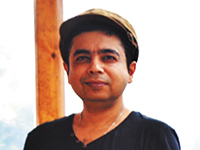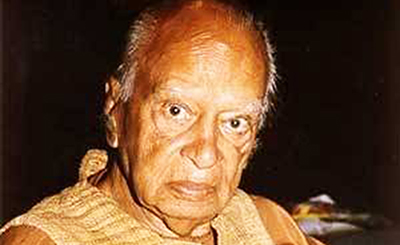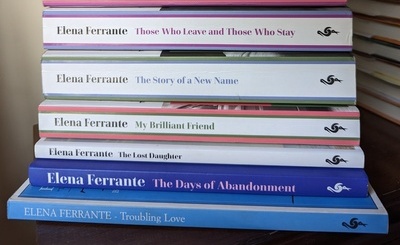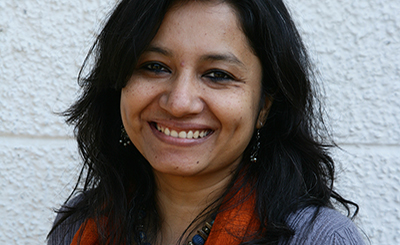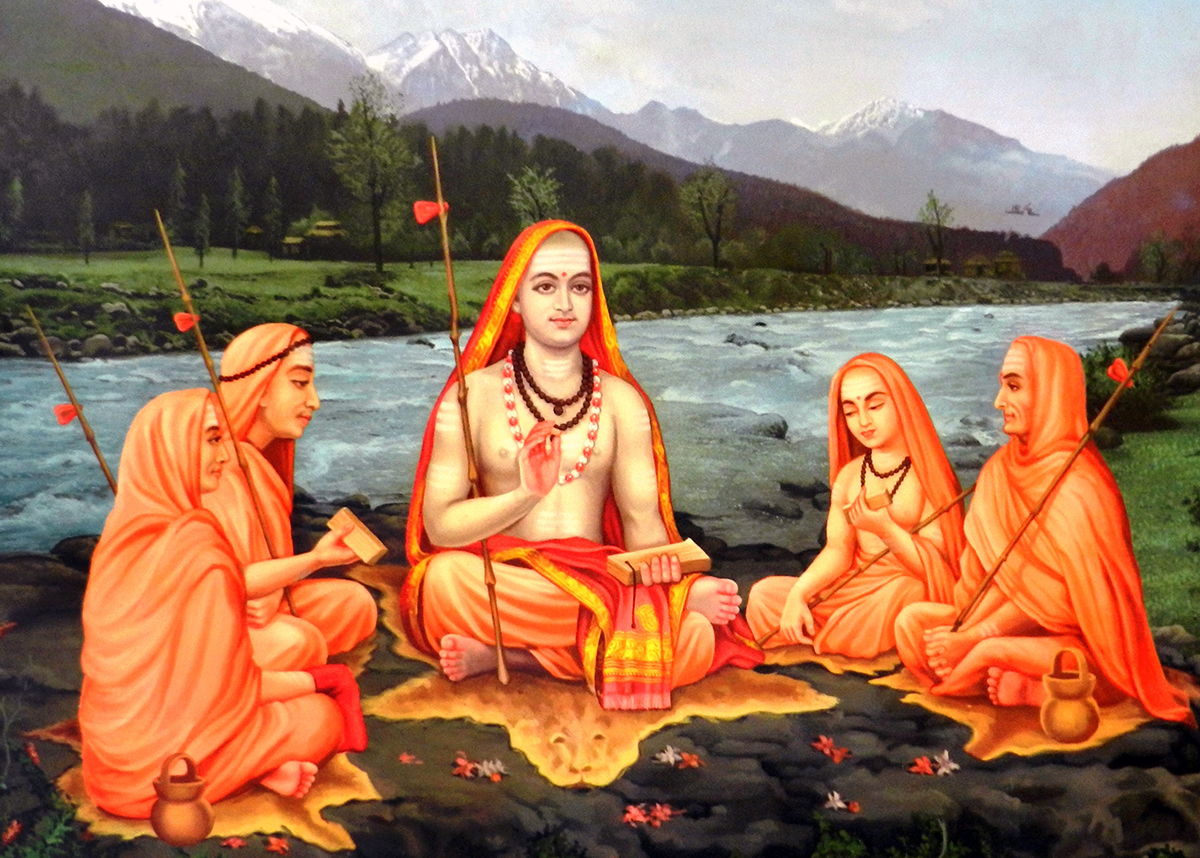
In the ‘New India’, all the values of the righteous — as enumerated in The Bhagavad Gita — appear to have become penal offences
Sanatan Dharma or the “Eternal Law” includes all the philosophies which originated in the Indian sub-continent and gave birth to an array of diversity known as Hinduism, Buddhism, Jainism and Sikhism which also have their own schools and sub-schools.
We already know, unlike the Bible or the Quran, there is no single pivotal text of Sanatan Dharma that defines for us the values and practices of one homogenous approach — or a singular idea — of religious or spiritual life.
However, after the four Vedas, the first original ancient text to introduce the philosophy, mysticism and spirituality that marks the 10,000 year of Indian Civilisation was known as the Aranakyas or the “forest books”, which later became the first of the 13 Principal Upanishads, now known as the Brihadaranyaka Upanishad.
It is the pivotal text from where the philosophical origin of Sanatan Dharma emerged into the world like the origin of a river.
It started to flow like a small stream which became a great river with numerous intricate tributaries which are symbolic of the other Principal Upanishads, Buddhism, Jainism, Samkhya, Advaita and so on.
Through the passage of time and history, the ancient “river of search” created a braided ecology of inter-mingling ideas and practices which flooded the entire consciousness of the East, and gave birth to Asia.
The fundamental “Eastern” mystical philosophy — that preceded most of the influential philosophies and religions which defined the culture of Asia, apart from the Abrahamic religions of Judaism, Islam and the Eastern Orthodox Church, namely Hinduism, Buddhism, Confucianism, Taoism, Zen and Shinto — can be traced back to the Brihadaranyaka Upanishad: the mother text of Indian philosophical tradition.
In was in that ancient text, Brahman or the Divine or the Self or the Imperishable was defined as truth, infinite, bliss and stability.
The “wise seekers of Brahman” were told that “the great unborn Self which consists of understanding (vijnana)” resides “in the space within the heart” who is “the ruler of all, the Lord of all, the King of all”.
“The heart is the same as Prajapati, it is Brahman, it is the All.”
The revolutionary idea of Eastern philosophy that the “divine is within” took birth in the Brihadaranyaka Upanishad.
Subsequently, the crucial spiritual discovery or the great awakening, gave rise to yoga or “to yoke” one’s consciousness with the inner divinity — or a field of transcendental reality — through a combination of knowledge, ethics and meditative practices, and thereby, transform the individual self from the human to the humane: to grow, evolve and journey towards enlightenment.
In Brihadaranyaka Upanishad, understanding and wisdom were sought to be valued and worshipped, along with a dictum of ideal conduct: “restrain yourselves, give, be compassionate”.
Centuries later, The Bhagavad Gita enumerated the traits of the righteous (the godly) and the unrighteous (the devilish).
The traits of the righteous were, “Fearless and pure in heart; steadfast in the exercise of wisdom; restrained and open-handed; none-hurting, truthful, from anger free; compassionate to all existent beings; free from nagging greed; gentle, modest, never fickle; ardent, patient, enduring, pure, not treacherous nor arrogant.”
The traits of the unrighteous were, “lost souls with feeble minds; they embark on cruel and violent deeds; maddened by hypocrisy and pride, clutching at false conceptions, deluded…puffed up with self-conceit, unbending; maddened by their pride in wealth; selfishness, force, pride, desire and anger — they rely on, envying and hating.”
The Values on the Indian Tricolour
The values of our philosophical tradition were symbolised in the Indian Tricolour when India became an independent nation state.
The National Flag is a tricolour of saffron, white and green; with the Ashoka Chakra, a 24-spoke wheel, in navy blue, at its centre.
Sarvepalli Radhakrishnan — the scholar of Indian philosophy, who wrote a classic two-volume Indian Philosophy, and later became the second President of India — had clarified the meaning of the Tricolour when it was adopted on July 22, 1947:
“Bhagwa or the saffron colour denotes renunciation or disinterestedness. Our leaders must be indifferent to material gains and dedicate themselves to their work. The white in the centre is light, the path of truth to guide our conduct. The green shows our relation to (the) soil, our relation to the plant life here, on which all other life depends. The Ashoka Chakra in the centre of the white is the wheel of the law of dharma. Truth or satya, dharma or virtue ought to be the controlling principle of those who work under this flag. Again, the wheel denotes motion. There is death in stagnation. There is life in movement. India should no more resist change, it must move and go forward. The wheel represents the dynamism of a peaceful change.”
The emblem of the Chakra or The Wheel with 24 spokes in our Indian flag is borrowed from Ashoka (304-232 BCE); and Ashoka had borrowed the idea from Sakyamuni Buddha’s Dharmachakra or The Wheel of Truth that has a more complex philosophy of Dependent Origination/Conditional Arising behind it.
The 24 spokes of the Dharmachakra depicted in the Indian Flag is also considered as symbolic of the 24 Rishis or sages — each representing the 24 syllables of The Gayatri Mantra.
The 24 spokes of the Ashoka Chakra also denote the 24 values described by the Buddha — which all have 24
Sanskrit words (which I am not writing) which mean: Love, courage, patience, peace, magnanimity, goodness, faith, gentleness, selflessness, self-control, self-sacrifice, truthfulness, righteousness, justice, mercy, gracefulness, humility, loyalty, sympathy, spiritual knowledge, forgiveness, honesty, hope and eternity.
These 24 values were deemed as the qualities to aspire for by all Indians. They are free of religious connotations; they stem from the wisdom of the human soul; they are universal, humane and secular.
The fundamental values of Sanatan Dharma — that first appeared in The Brihadaranyaka Upanishad and developed further over the ages — have inspired the symbolism of our National Flag; and those values are completely attuned to the progressive words of the Preamble and the fundamental principles of our Constitution.
In other words, India is already a Sanatan Rashtra whose values — as enumerated in our philosophical tradition — are symbolised in our National Flag. Those values are also in total synergy with the Indian Constitution as per India’s history, traditions, characteristics and civilisational spirit.
Any effort to change that forcibly would be to go against India, damage her progress and destroy what she symbolises as a modern sovereign “civilisational state” in the 21st century that also promises to be a historic century of Asia that will also potentially witness the final end of imperialism, eradication of colonialism, cessation of hegemonic control of global institutions and forging of a multi-polar world order — committed to peace, equality, co-operation and humanity — under the auspices of international law and justice.
Sanatan Rashtra v/s Hindutva Rashtra
In the beginning of the third decade of the young 21st century, the values of our Sanatan Rashtra (represented by the ideals of Sanatan Dharma, the National Flag and the Indian Constitution) are under clear and present threat by the forces of Hindutva Rashtra which are working in the guise of Hindu Rashtra.
The values of Hindutva — a political ideology ideated and introduced by V.D Savarkar in 1923 and developed further by M.S.Golwalkar, with the inspiration from 19th century European nationalism, that also gave birth to Nazism and Zionism – are fundamentally at odds with the values of Sanatan Dharma, the National Flag and the Constitution of India.
In the essay “Hindutva: Who is Hindu?” Savarkar himself wrote, “Hindutva is not identical with what is vaguely indicated by the term Hinduism.”
M.S. Golwalkar asked the Hindus, “Don’t waste your energy fighting the British, save your energy to fight our internal enemies that are Muslims, Christians and Communists.”
The same mentality persists even now: Hindutva forces don’t participate in any anti-imperialist or anti-colonial movements; they are happy to remain timid and servile to the exploitative foreign imperial powers of the day, and simultaneously bare their claws and fangs toward one’s own fellow citizens: the minorities and the leftists who they deride as “jihadis”, “libtards”, “sickulars”, “tukde tukde gang”, “urban Naxals” and so on.
We also know that the Rashtriya Swayamsevak Sangh (RSS) was advocating for the Manusmriti — an ultra-conservative legal text ideated by Brahmanical priesthood, translated in 1794 by William Jones, and made popular by the colonial British Government — as the Constitution of India.
The RSS had stopped raising the National Flag of India, after 1950, for 52 years, because it was opposed to it.
The Hindutva forces also want to amend the Constitution of India, delete key words and turn India into a theocratic state — based upon systemic inequality, anti-egalitarianism and elitism — where the Hindus will have supremacy over all the other religious minorities, and the Brahmins and the upper castes — especially from the Hindi heartland — will have supremacy over all the other Hindus.
Hindutva ideologues were inspired simultaneously by the nationalist, racial, supremacist and cultural values of both Nazism and Zionism. And, over the decades, that combined influence has got “culturally internalised” within the Sangh Parivar.
It is extremely ironical — even an aspect of the metaphorical “Divine Comedy” – that the key entities which comprise the boisterous Sangh Parivar — who call themselves the real native nationalists of the Indian soil — are totally dominated in their ideology and worldview by foreign influence. From the key words — “Hindu” and “Hindustan” coined by the Islamic Persians to “Hinduism” and “Hindi’ standardised and popularised by the Christian British — to “militant nationalism of Hindutva” influenced by Nazism and Zionism, the proud members of the Sangh Parivar are the true followers of foreign masters.
Along with the National Flag and the Indian Constitution, the “Hindu Rashtra” being fashioned by the Hindutva forces is also an anti-thesis to the fundamental values of Sanatan Dharma.
Anger, hate, militancy, bigotry, victimhood, prejudice, fanaticism, demagoguery, cruelty, greed, fear, lies, deception, violence, polarisation and divisiveness — which the Hindutva forces always use in an organised manner — is reflective of the far right political ideologies which thrive by manufacturing “enemies”, stoking racial or cultural supremacism, provoking constant societal conflicts and exploiting religious sentiments through hollow kitschy symbolism that is devoid of actual spiritual ethos.
The Philosophical Question
Going by all this, the question arises: why do the “Hinduism-loving” citizens tolerate what the Bhagavad Gita calls the unrighteous or the devilish?
Is it because they don’t understand that Hindutva Rashtra — in guise of Hindu Rashtra — is an anti-thesis to our Sanatan Rashtra?
Or do they fail to realise that those who claim to work for “Hindu” interests actually display a visceral contempt for human life when they maliciously use all kinds of hate-seeded fake-news — information, images and videos — to trick and manipulate “Hindu” minds who have reposed faith and trust upon them?
Or they haven’t been exposed to the actual teachings enumerated in the ancient philosophical texts written by our wisest seers, and have only concerned themselves with ritualistic religion, Brahminical ideologies and the politically-aligned capitalist gurus?
Or is it, being churned out of anti-democratic households dominated by conservative patriarchal mindset — and ironed-out by an education system that values rote instead of critical thinking — they are psychologically trained to remain subservient to higher authority, cannot talk eye to eye with power and defy its dictates?
But don’t do the “Hinduism-loving” citizens feel outrage when they see the viral videos where the blood-thirsty mobs are being violent, cruel, ruthless and inhumane while chanting religious and nationalist slogans?
Don’t they feel a hint of suspicion that those slogans — meant for piety and reverence — are possibly being terribly misused as battle cries?
Don’t they feel horrified that over seven million citizens can be denied of normal life and kept under military siege for months?
Don’t they understand that traumatic internal mayhem and poor socio-economic conditions won’t help the nation and the people to progress and prosper?
Don’t they feel it might not be right to throw tear-gas shells into libraries and blow up hands of students with stun grenades?
Don’t they feel that it is barbaric to stop ambulances from helping the wounded, issue threats not to shelter the dispossessed and charge the victims of violence as perpetrators?
Don’t they feel it’s unacceptable to tolerate open calls for “goli maro” or to murder?
Don’t they get shocked or offended by all that?
The national character of the India is now being refashioned with the traits which the Bhagavad Gita describes as the unrighteous or the devilish.
In an address to a gathering at Jantar Mantar in New Delhi on March 1 this year, author and activist Arundhati Roy said, “Now, we are reduced to pleading for our rights as citizens from people who have had nothing to do with building this country. And as we plead, we watch the state withdraw its protection, we watch the police get communalised, we watch the judiciary gradually abdicate its duty, we watch the media that is meant to afflict the comfortable and comfort the afflicted do the very opposite.’
In a recent article about the “The Delhi Darkness”, Bhanu Pratap Mehta emphasised the establishment agenda in the headline: “Our rulers want an India that thrives on cruelty, fear, division, violence.”
We have had governments which have been incompetent, lethargic and corrupt, but for the first time ever we have a regime with a shadowy, fascist and diabolical aura hanging over it.
Many are already expressing on social media and on the many posters displayed at the recent protest rallies that the present regime is operating more like a neo-Nazi party, a military junta, a banana republic and a mafia state, than a democratic government committed to the rule of law, conscience and ethics.
People are being victimised by overwhelming propaganda machinery — raging a relentless sophisticated
psychological warfare – that has grabbed their minds and their votes, but has offered in return: a collapsing economy, ever sinking human development indices, ruined democratic institutions, fractured social fabric, atmosphere of toxicity, menace of pogroms and threat of detention centres.
Hindutva National Order and Neoliberal World Order
The two simultaneous colonisation projects of Hindutva National Order (HNO) — of the Sangh Parivar — and the Neoliberal World Order (NWO) — of the US-centralised AngloZionist Empire, that has emerged out of the British Empire, post World War II — will completely hollow out all the values of Sanatan Rashtra and the inherent strengths of our economy.
Most of our public wealth — taxpayers’ money and national resources — will be funnelled to the establishment-aligned Indian and foreign corporations; the massive profits will make their way into the shadowy off-shore hedge-funds, while vast swathes of our economy — from health to education; from infrastructure to irrigation — will lie broken, underfunded and undeveloped.
In an interview to M.K. Venu, the Nobel Laureate in Economics Abhijit Banerjee said that “Poverty is not a concern of the Washington Consensus.”
Yet, the present regime of India is mindlessly following the hardcore neoliberal policies of the Washington Consensus — from “cashless economy” to “data is the new oil”; from over-centralisation of power to over-excessive technocracy; from wholesale privatisation to the establishment of an Orwellian surveillance state; from the systemic destruction of the public sector to austerity, or the gradual reduction of social welfare.
The crucial lessons from the abject failures of pro-corporate and pro-one-per-cent neoliberalism that have sparked widespread protests all around the world — from France to Chile — haven’t been learnt in India.
The essential values of neoliberalism — a virulent post-1980s mutation of capitalism that puts capital and profit ahead of people and the planet, wilfully subverts democracies and covertly privatises elected governments – are at odds with the values and promises enshrined in our holy book: the Constitution.
Billions of dollars are being spent on dodgy arms deals — which benefit foreign interests — and on the loan write-offs of the crony corporations, while stunted growth is suffered — on a massive scale — by malnourished Indian children; and public education is made more expensive to deny the opportunity of social mobility to the poor and the deprived.
Ironically, the regime refuses to accept the socio-economic advice of the Nobel Laureates who specialise on welfare economics and poverty: neither Amartya Sen nor Abhijit Banerjee.
We already know the present regime’s deep association with Israel and the Zionist Likud party. Prime Minister Narendra Modi wasn’t only the first Indian PM to visit Israel in 2017; he was also the first Indian Chief Minister to visit Israel in 2006.
Subsequent to the visit, the state of Gujarat and its CM, Narendra Modi, are said to have become the clients of US-
based APCO Worldwide — the global public relations, public affairs and strategic communications consultancy — that has a close connection to Israel and its establishment.
From Israeli Spice bombs used in Balakot to Israeli spyware Pegasus used on Indian citizens, the alliance and bonhomie between Hindutva and Zionism has escalated since 2014.
The 360 degree surveillance infrastructure — or a panopticon — being developed – that principally discards the Supreme Court judgment that privacy is a fundamental right – is so dystopian that all the details of every citizen – from whom they marry to change of address; from job switch to financial status – will be tracked and collected in an ‘all-encompassing auto-updating searchable database’ (Huffington Post) that will have an enormous potential of malice, corruption and misuse, and make every citizen more vulnerable, rather than safe and secure.
The disastrous demonetisation experiment of “cashless economy” was conducted upon India by making the citizens the guinea pigs of the Neoliberal World Order with its anti-freedom technocratic agenda of total financial digitalisation. Similar totalitarian experiments are more likely to be conducted upon us in more deceptive and devious manner with incredible hubris and chutzpah.
Officers from the Indian Police Services and the Indian Army have been sent to Israel for training, and that newly learnt knowledge is being used — as ruthless tactics — against one’s own citizens in Kashmir, Aligarh, Delhi and elsewhere.
Even the centralised manner of how the propaganda machinery is efficiently working in India — with an uncanny coordination between what the TV channels say, what gets published in print, what the politicians comment upon and what is dissipated through social media and — what Ravish Kumar describes as — the “WhatsApp University”, is a mirror reflection of what is happening elsewhere, say Brazil, where a pro-US, pro-Israel, pro-corporate and pro-neoliberal right wing regime of Jair Bolsonaro has come to power, using a similar propaganda machinery with an emphasis upon hate, victimhood, insecurity, fear, hysteria, religion, Islamophobia, fake-news, smearing of opponents, brandishing of the leftists as “enemies” or “traitors”, and a widespread use of social media and the WhatsApp messenger platform, by a well-oiled troll army that operates under centralised control.
The “template” used in India and Brazil seems to be the same; and appears to have originated, from the same source.
Robert Fisk described the recent India-Israel relations — in an article published in The Independent — as “an unspoken — and politically dangerous – ‘anti-Islamist’ coalition, an unofficial, unacknowledged alliance, while India itself has now become the largest weapons market for the Israeli arms trade.”
The premier saffron think-tank to influence public policy and strategy, the Vivekananda International Foundation (VIF), also actively collaborates and brainstorms with the following US think-tanks: the non-partisan Atlantic Council that “galvanises US global leadership” and the Washington DC-based Heritage Foundation that is known for “conservative public policy”.
So in other words, VIF — with links to Vivekananda Kendra, the BJP and the RSS — is deeply allied with the “neocon, neoliberal and the Empire”.
VIF think-tank was founded in 2009. Its founding director was Ajit Doval — retired director of the Intelligence Bureau — who became the National Security Advisor when the present regime came to power in 2014.
VIF made news in 2011-12 when it was said to have played a major role in bringing together the “Team Anna” that included Arvind Kejriwal, Kiran Bedi, General V.K. Singh and Baba Ramdev.
The news magazine Tehelka — known for its sting operations — claimed that VIF spearheaded the Anna Hazare anti-corruption movement to undermine the UPA government of Prime Minister Manmohan Singh.
In an investigative piece published by The Caravan in 2017 titled “How ties with the Think Tanks Vivekananda International Foundation and India Foundation enhance Ajit Doval’s Influence”, Praveen Donthi pointed out how the foundations linked to Ajit Doval (founder director of VIF) and his son Shaurya (director of India Foundation) share close ties with the powerful leaders of the BJP and the RSS.
Many of the current and former members of VIF — from Ajit Doval to Nripendra Misra; from Anil Baijal to Bibek Debroy — are the members of the present administration, including the NITI Aayog, the pivotal policy think-tank of the Government of India, established by the present regime.
VIF has become for India what the Council on Foreign Relations (CFR) is for the US, the Bilderberg Group is for Europe and the Trilateral Commission is for Asia.
They all are unelected private think-tanks — operating via a global web of inter-related foundations, subsidiaries, lobbyists and partners — which yield disproportionate power and undemocratic influence over elected governments and their polices.
In a social media post on April 25, 2017, “Exchange Programs — U.S. Department of State” put forward a list of 10 — along with mug shots — of “the alumni of our programs” who featured in the “Time’s list of the world’s most influential people”.
In the published list, the number 9 was “Theresa May, IVLP, 2004” who later went on to become the UK Prime Minister. But, more significantly, the number 7 was “Narendra Modi, ACYPL, 1993, SUSI 1999”.
Page
Donate Now
More from The Byword
Comments
*Comments will be moderated



